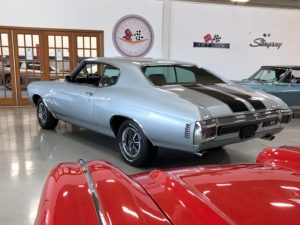Despite the amazing commercial success of Corvettes during the mid to late 70s – as our last article indicated – this decade was rough on America and its car industry. For many, these times were bleak. Due to the inflation set off by skyrocketing oil prices, cash from a summer job set on a dresser could lose 5-10% of its value before Christmas. And those that could arrange a bank loan paid nose bleed interest rates to obtain new cars. Cars that were in the midst of emissions bypass surgery.
Unfortunately, the emissions restrictions hung around the decade like parents at post prom. In the end, the 90% reduction – originally targeted for 1975 and 1976 – would be met by automakers in 1980 (for hydrocarbons), 1981 (for carbon monoxide), and 1994 for NOx. That’s right, the “5-6 year” goals initiated in 1970 actually took 10 – 24 years to meet.[1]
In such heavy air, it was perhaps easier to celebrate the past rather than look towards the future. So as the Boston Pops prepared to commemorate the bi-centennial of the Declaration of Independence, Corvette’s legendary leader and Chief Engineer – Zora Arkus-Duntov – retired. His sendoff in January of 1975 was one of the largest retirement roasts “. . . ever conducted for a GM employee”.[2]
Back in Chevy dealers, customers who sought the sensation of speed – nearly the only variety still available – had a few precious months before the Corvette convertible’s discontinuation at the end of the ’75 model year.
In 1976 searching for an escape, Manfred Mann popularized Bruce Springsteen’s 1973 song “Blinded by the Light,” recalling the hotrods “Revved up like a Deuce [A ’32 Ford, if lyrics are deciphered properly]” and “go-kart Mozart” on the album Roaring Silence.[3] And unfortunately by the time the 500,000th Corvette sold in 1977, the Stingray script itself had fled fenders.
Nope, Don’t Make ’Em Like They Used to
Novel emissions technology, side impact beams, stronger bumpers, and a new bladdered fuel tank – in ’73, ’74, and ’75 – added hundreds of pounds to the C3’s curbweight.[4] An approximate 200 lbs. jump is marked on the blue line in the next chart.
The “newer is better” adage might’ve sold increasingly impotent V8 Corvettes to wealthy professionals and diehard fans. But for the price sensitive, America’s new favorite ponycar – the Mustang II – provided downright sterility. Unlike its Camaro contemporary, Ford’s wild animal had its V8 gelded before its 1974 introduction.[5] And over in Highland Park, Mopar’s new V8 muscle for 1976 – the F-body Aspen/Volare – never really finished physical therapy as it was plagued by recalls and Chyrsler’s own strapped financial position.[6]
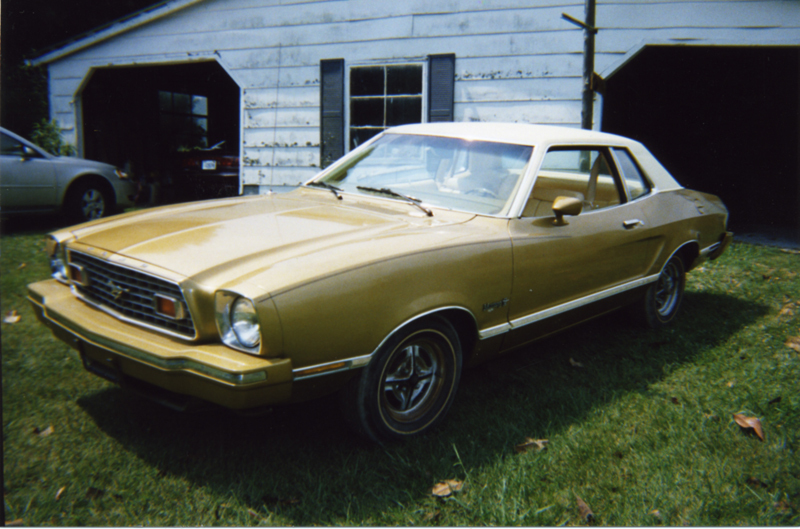
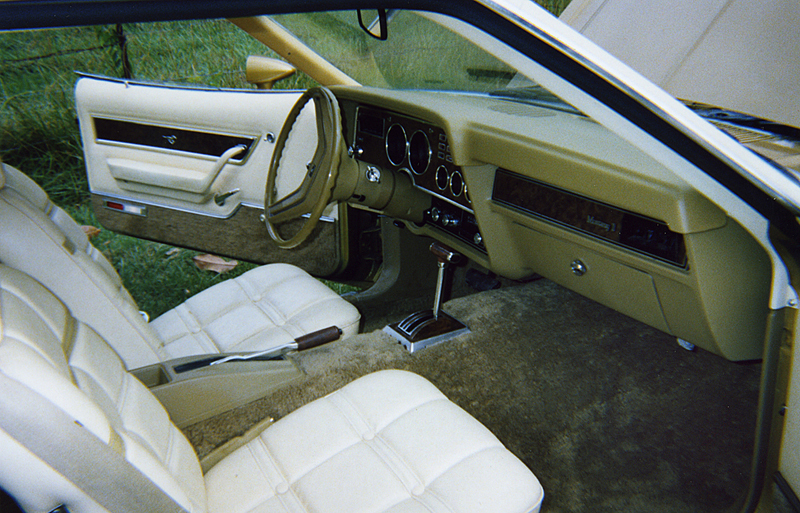
A 1976 Mustang II having a 2.8 Liter 103 net horsepower V6. The Mustang II was introduced in 1974 with this engine. A 5.0 V8 with 134 net horsepower was offered in 1975 but was not available in 1974. Photo courtesy of Barrett-Jackson Auction Company
With few domestic options available, in 1975 buyers that thirsted for power had to settle for the L82 Corvette’s 205 horsepower. That may sound depressing. However, 90% of Corvette customers took delivery of the ‘75 base model and its 165 net horsepower. These 1975 base L48s are unceremoniously distincted as the Corvettes with the lowest power-to-weight ratio EVER! Even the original 1953 – with its 140 net horsepower “Blue Flame” inline-six – had more pep per pound. See the black power-to-weight ratio in the chart below.
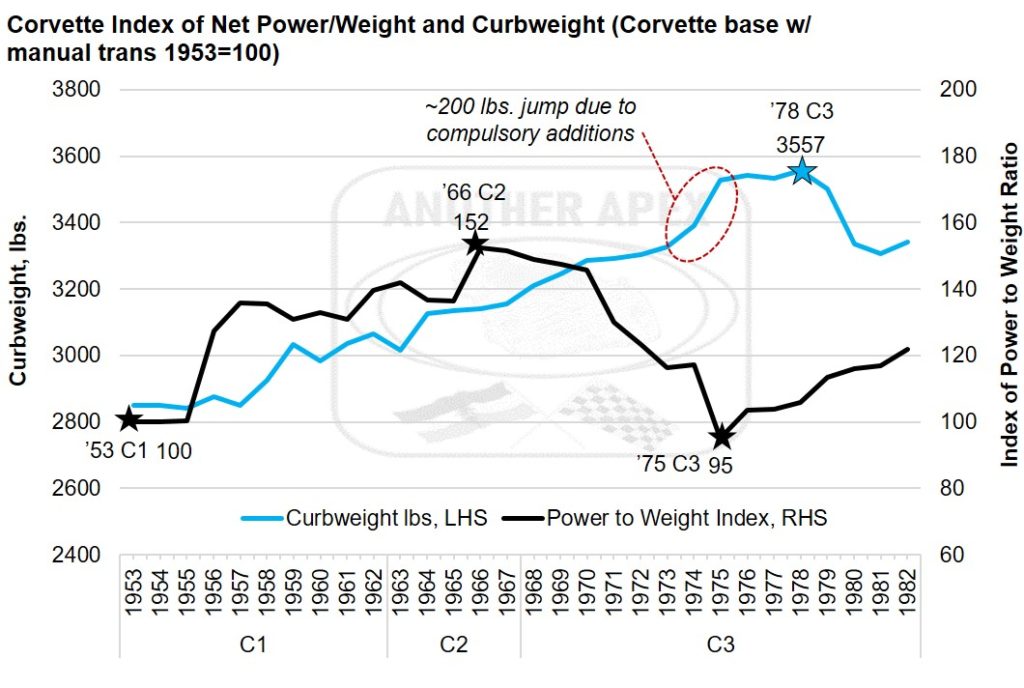
All Power to the Princes
The tempo of Motown’s musical chairs kicked up a notch in the 70s. By 1975 the accelerating flight from Detroit had even swept up its music label. Indeed, as Marvin Gaye rhetorically asked “What’s Going On” his Hitsville USA label skipped the suburbs and headed for Hollywood in 1972.[7]
But in these changing times, Alfred Sloan’s legacy ensured that each of GM’s handful of divisions had some marketing leeway. So when he arrived at Chevrolet as General Manager in 1969, John DeLorean – who had overseen the conception of muscle cars in the 60s – thought America’s sportscar might need some course correction.[8] As a result, before the C3 hit mid-corner in the 70s, he realized that an extra level of sophistication and civility could further broaden the two-seater’s appeal, especially with maturing baby-boomers.[9]
The prior C2 generation had transformed the Corvette into a focused sports car. In fact, it hadn’t had a trunk since the first generation which ended production in 1962. Cognoscente of this, new options for leather, lush carpets, and luggage racks were intended to offset some of the inevitable deceleration required by the EPA’s 1975 emissions target (See our Part 5 for Targets).[10]
The Lacoste of Luxury
Chevrolet’s plotted course towards “luxury sports car” was hardly unique at the time. Indeed, Jaguar had launched an extended version of its sensuous E-type in 1966 to respond to America’s growing need for comfort.[11] Not only did the 2+2 XKE coupe provide a unique automatic transmission option and boast an extra nine inches between its axles, but the success of the big coupe also made the 2+2 Jaguar’s floorplan for the future.[12] As US regulation came to a boil, fear of a Yankee ban on roadsters persuaded Coventry to focus the E-type’s heir – christened as the XJS in the fall of 1975 – exclusively on grand touring.[13]
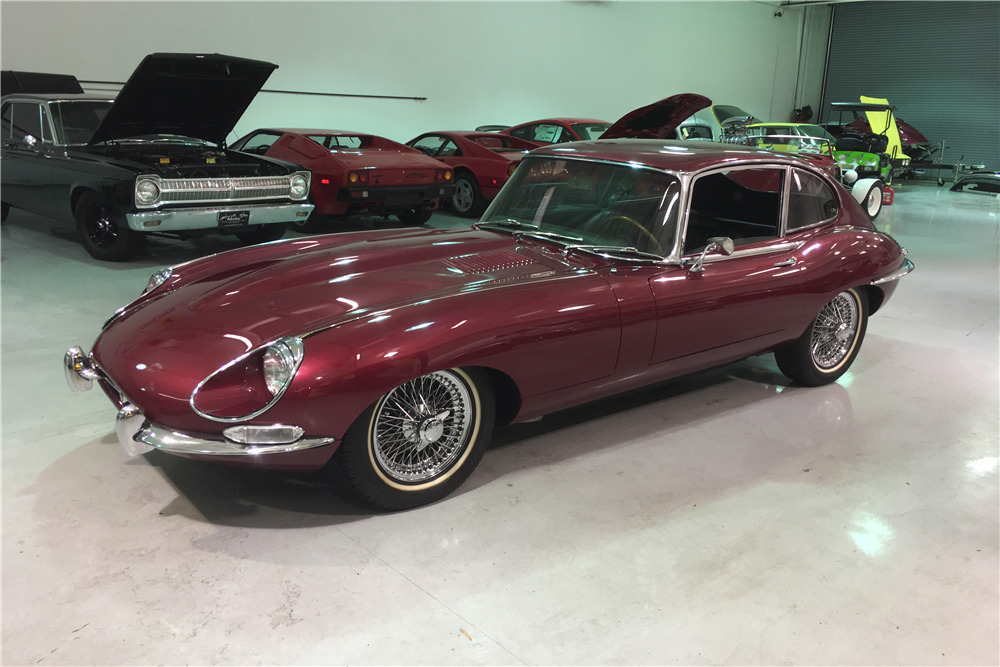


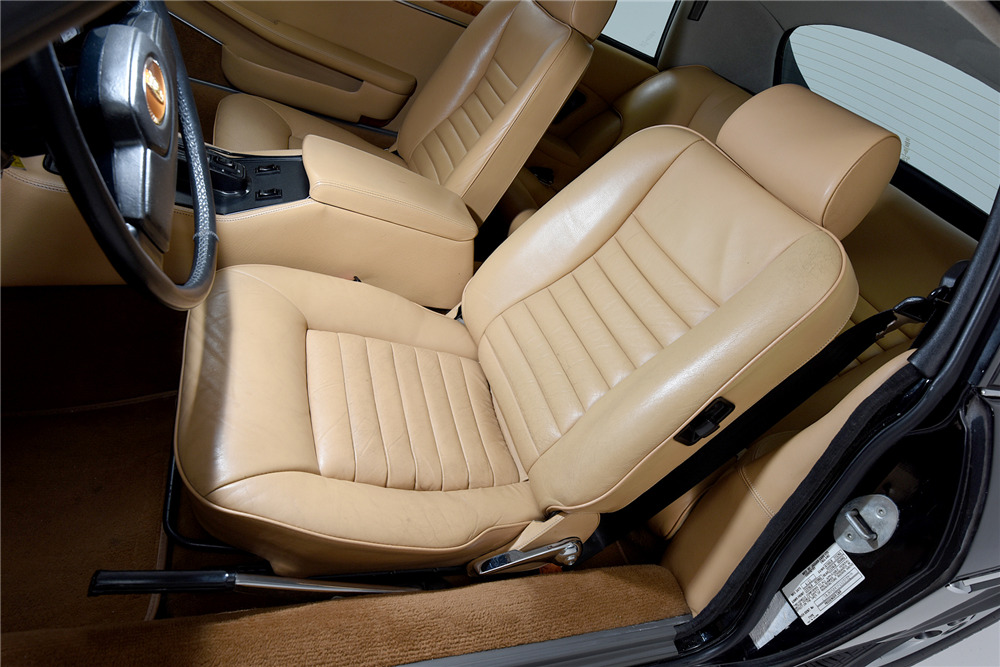
Pic 1 is a 1968 Jaguar E-type 2+2 fixed head coupe with the automatic transmission that was introduced for the longer coupe. Pic 2 is a 1985 Jaguar XJS 2+2; it was introduced in 1975 to fill the void left by the E-type. Photos courtesy of Barrett-Jackson Auction Company
Fortunately, Stuttgart’s well documented approach to the GT wave was less linear. Also responding to American tastes, Porsche finalized the design of a front engine V8 GT in 1972 and introduced the rounded 928 in 1978.[14] Porsche expected the large, plush, and balanced 2+2 to eventually replace its iconic 911.[15] However in at least a double twist of irony, after 43 years in America, new Porsche CEO Peter Schultz – recruited during an external search in 1981 – famously elected to retain the 911.[16] Thus, later sending a middle-aged 928 design to its early retirement.

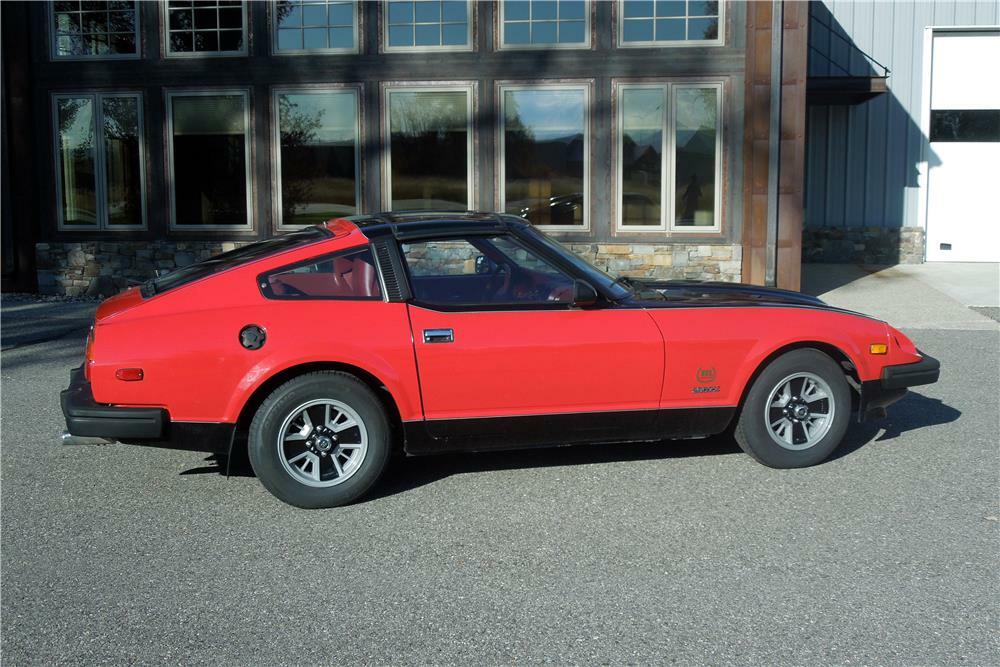
Pic 1 is a 1980 Porsche 928; introduced in 1978 all 928s were 2+2s and automatics were common. Pic 2 is a 1980 Datsun 280ZX two-seat coupe; also available as a 2+2 this luxurious second generation “Z” was introduced in 1979. Photos courtesy of Barrett-Jackson Auction Company
As a surge of imported European GTs were unloaded, west coast longshoremen may have noticed Nissan’s measured effort to keep up with the preppy kids. Indeed, Datsun’s Z-car – originally introduced as a sporty two-seater in 1969 – offered a 2+2 folding backseat model in ’74.
By 1978, the original Z shape advertised itself as a “Luxury high-performance car.”[17] And in 1979, the arrival of the opulent second generation Datsun 280ZX guaranteed admission to Hampton country clubs. In fact, lured to the dark side by the silver anniversary Corvette, Datsun’s eccentric “Black Gold” anniversary trimmed Z guaranteed Playboy’s Member status.
Finish Line or Punch Line
But unlike the imports – which designed all new “luxury sports cars” in the 70s – new Corvette Boss Dave McLellan needed to introduce a cost-effective ‘step change’ into what had been a gradual C3 metamorphous.[18]
And oulah, by Corvette’s 25th anniversary in 1978, a new glass fastback significantly increased interior space, a new fuel tank boosted capacity by 40%, and fresh dash and door panels materialized.[19]
Even a trailer towing package had been made available.[20]
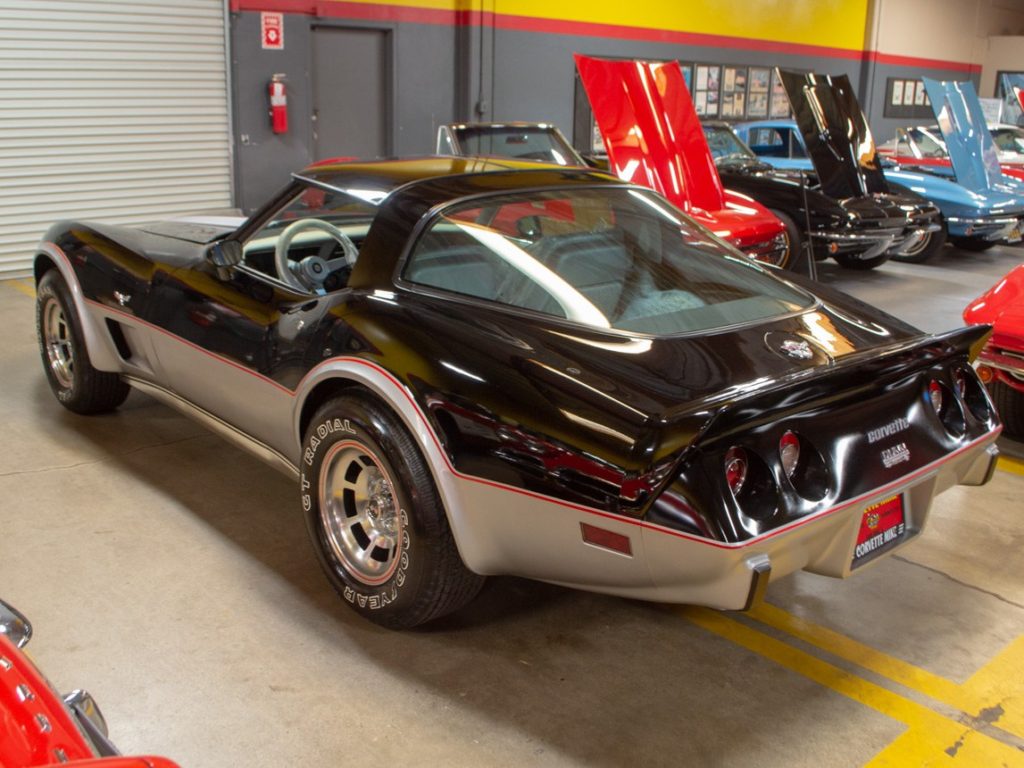



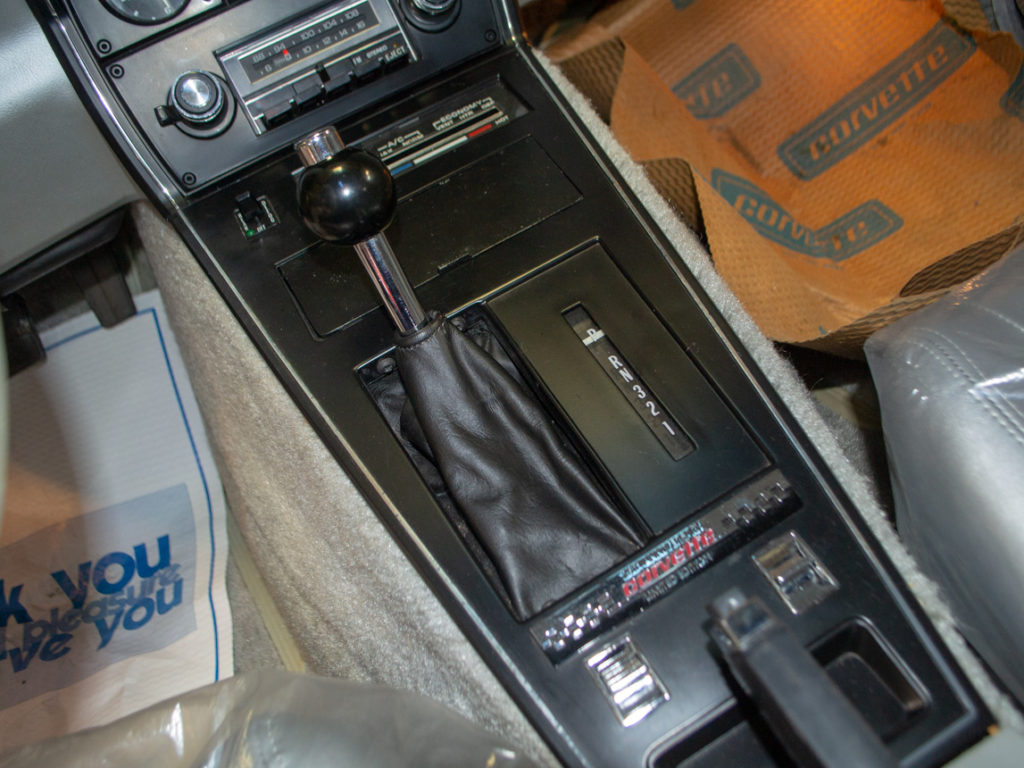
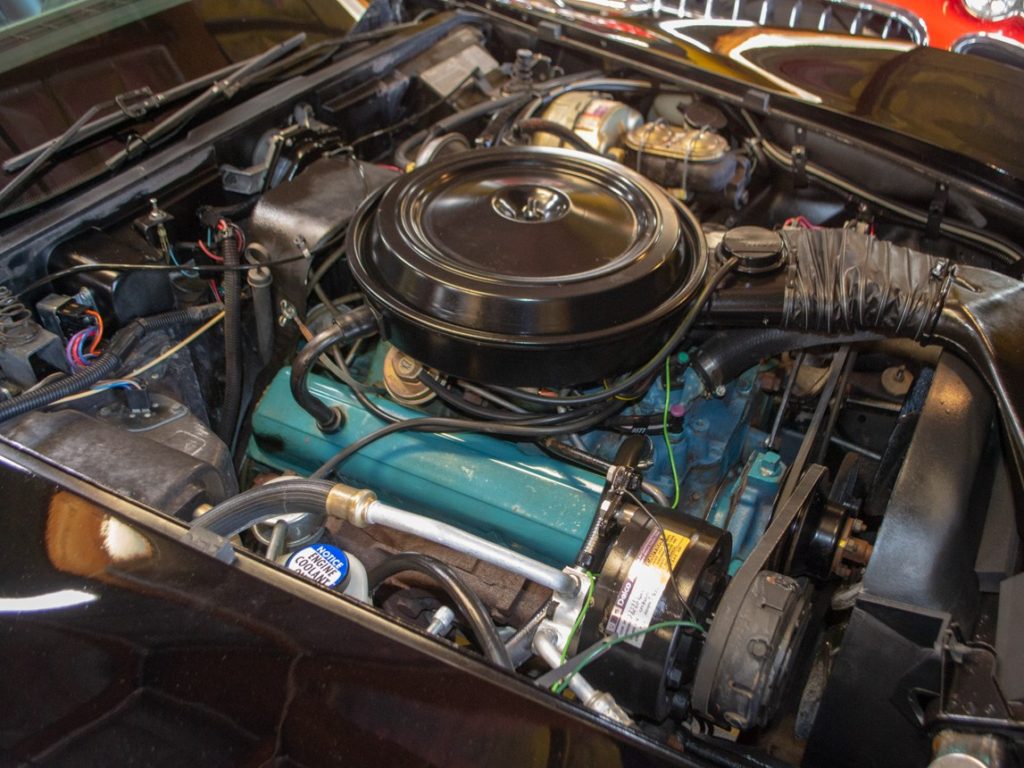
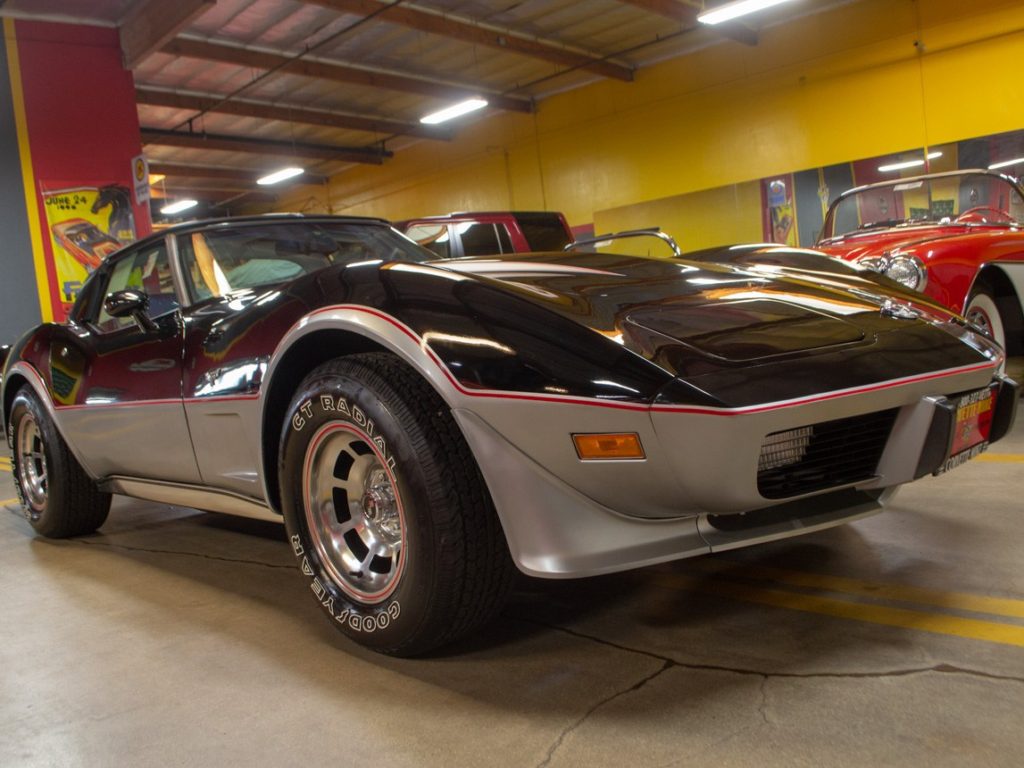
A 1978 Chevrolet Corvette with a base L48 small-block 350 cubic inch V8 rated at 185 horsepower. In Indy-500 pace-car trim, it was a magnet for spectators and speculators. Note the spacious aero fastback and 25th anniversary medallion [all ‘78s] and front and rear spoilers [pacer only]. See our last post for more ’78 pace car details: https://anotherapex.com/corvette-in-the-70s-commercial-success-corvette-power-from-c1-to-c8-part-6a/ This original and unwrapped specimen was from Corvette Mike in Anaheim, CA; no longer for sale.
Car & Driver’s prolific Executive Editor, the late Brock Yates, almost called the ’78 Vette a “true GT car” in his October, 1977 review.[20] Instead, he pointed out that GM finally provided the old Sting Ray sled some key GT car attributes. In this article, he also lavished this praise, “the base L-48 automatic is no slouch” –and– “general driveability and road manners are of a high order.”[22] Perhaps not the strongest level of conviction. However, next year Don Sherman took a firmer stance on the ’79 Corvette. In fact, he pleaded to all “. . . true friends of the Corvette not to buy, in the hope that GM will get the message and invest in a redesign.[23]” Thank you Mr. Sherman!
Mr. Cole, I’m Going Greek
But pace-car robes – in the form of flowing front and rear spoilers – were as easy on the wind as the eyes. And just as Sherman had feared, “ . . . hoards [were] outbidding each other for an obsolete sportscar.[24]” Almost 54,000 Corvettes were produced for 1979. A sales record that continues to wear the laurel crown for Corvettes sold in a single model-year.
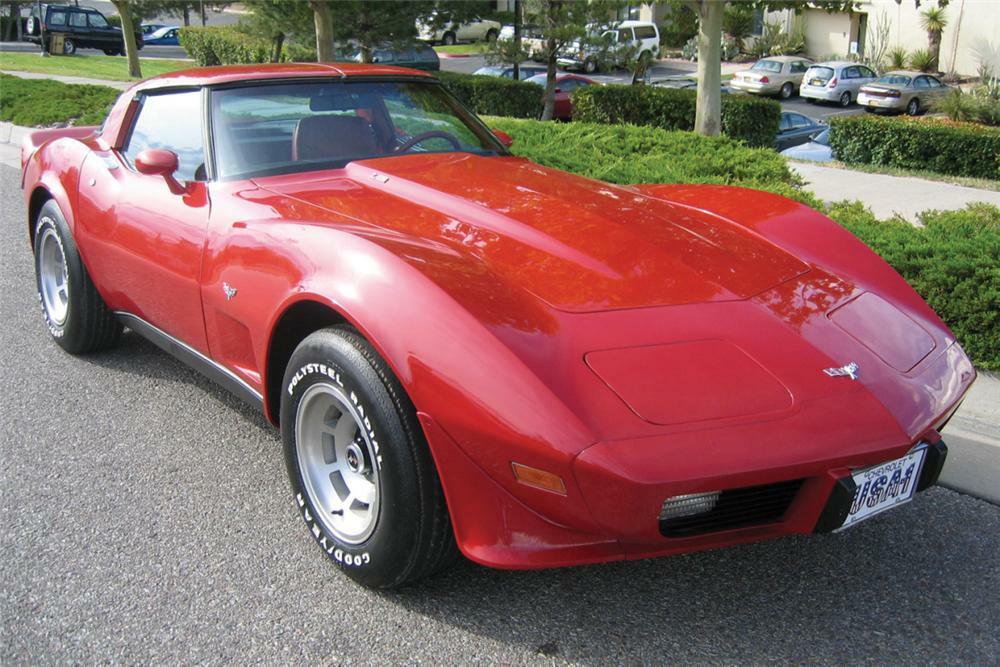
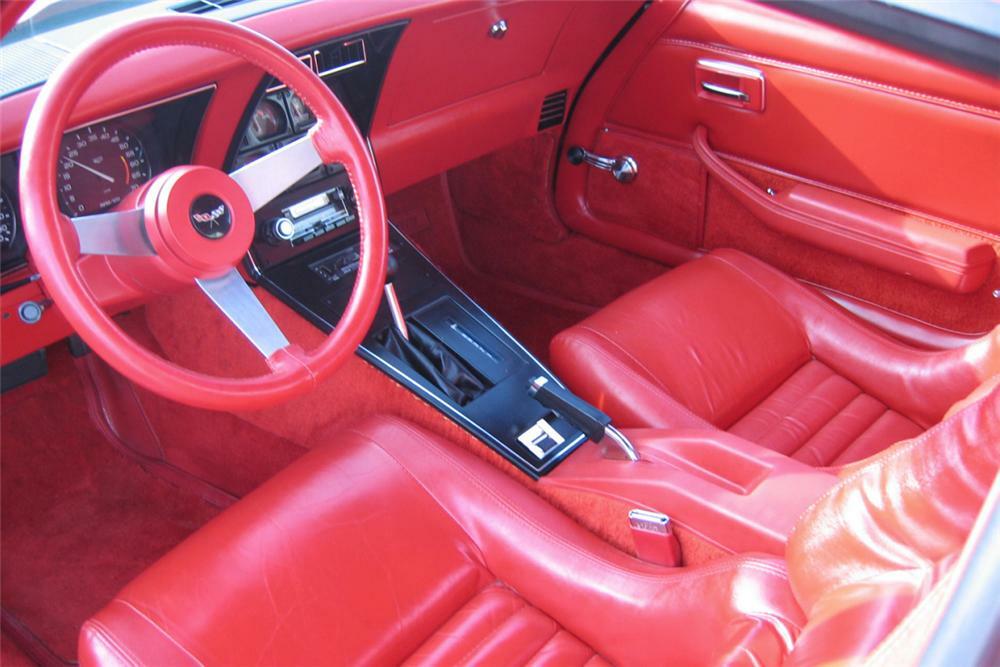

A 1979 Chevrolet Corvette with the upgraded L82 small-block 350 cubic inch V8 rated at 225 horsepower. More Corvettes were sold in 1979 than any other model year, despite Car & Driver’s plea to encourage a redesign. This red on red example is a uniquely optioned car, with the L82 engine, spoilers, automatic transmission, and AC, but without electric windows. Photos courtesy of Barrett-Jackson Auction Company
With its makeover complete and strong 50s & 60s legacies, the C3 headed for Faber College to pledge Delta and show the Omegas [aristocratic imports] what a GT car was all about.[25] Self-assured, this twentysomething was a heavyweight that battled boulevards two-tone style: with the exclusivity of a sedate V8 and anniversary medallions.
And just like the Deltas, it pushed its way into both roadhouses and boat houses. Indeed, this Vette shouted “toga!” like it was on “double secret probation.” In fact, 80% of ’78-’79 Corvettes had automatic transmissions. Thus liberating the majority of pilot’s hands for choice beverages. After all, it had been 25 years since the original automatic-only Corvette.
Although factory cup holders were a long way off, soon contemporary automotive journalist critiques would begin addressing fitment of the now proverbial “two sets of golf clubs.” This helped the glass fastback remain a Corvette styling cue well beyond the subsequent quarter century. And it certainly made the Chevy a more frequent sighting at country clubs.
Soothsayers
Despite its late 70s commercial success, even then not everyone preferred the later C3 generations. My high school friend’s father returned from Vietnam and bought a new 1970 Corvette. A few years later it was stolen while parked at his hospital office. After an insufficient insurance claim, he eventually replaced the Stingray with a less potent new 1977 Corvette – white with a luggage rack – and parked in the same place at the hospital for the next 15 years without a problem. The carjackers either thought a second heist was too risky, believed their own economics had improved, or preferred the earlier C3s; I tend to think the last.
Bruce Springsteen’s preference for an 18 year old first generation Corvette in 1978 – and possible inspiration from the TV show “Happy Days” – may be even more telling. His 1960 roadster’s sturdy build[26], convertible top, and 30% power to weight advantage [over a new ’78 Vette, assuming base models] perhaps did offer an escape from winter. In fact, in our eyes the C1 Corvette in Frank Stefanko’s photograph Corvette Winter harkens postwar success during tough times.
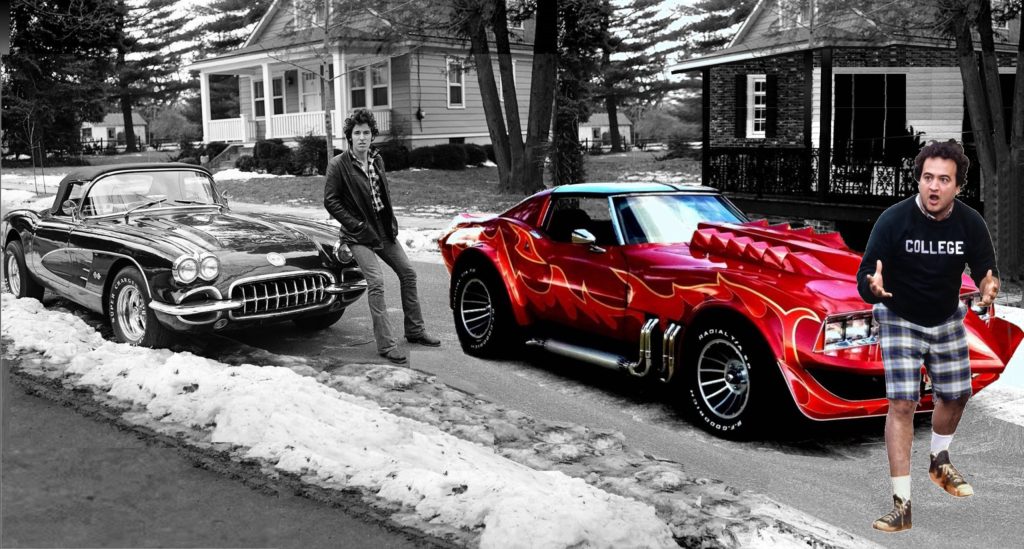
“The Boss or Blutarsky” – Blutarsky [John Belushi’s character from the 1977 movie Animal House, set in 1962] would have certainly celebrated Mark Hamill’s larger-than-life customization of a 1973 Stingray in the 1978 movie Corvette Summer. However, just a season before Kenny Dantley’s [the protagonist Hamill plays] coming of age movie was released, a 28 year old Bruce Springsteen – and likely fan of “Happy Days” set in the pre-Vietnam Milwaukee – showed his preference for an 18 year old Corvette roadster in Frank Stefanko’s photograph Corvette Winter. Coincidentally, Belushi’s co-star Tim Matheson drove a ’59 Corvette C1 in Animal House. Jez Stephens, Another Apex 9/17/2019
In an abstract attempt to revive the charisma of the early Corvettes, 70s late model Vettes seem to have frequently found their way into aftermarket fondue pots. For example, in the 1978 movie Corvette Summer Luke Skywalker fashions a vague tribute to Obi-Wan’s burning ‘Jedi Starfighter’ out of a ’73 Stingray. A conversion that Blutarsky – from the 1977 movie Animal House – would certainly have celebrated. However, surely even Bluto never considered such embellishments for his Delta brother’s [Otter, played by Tim Matheson] timeless ‘59 Corvette.’
The Weight was Over
When the C3 entered its teenage years in the 1980s, a nasty double-dip recession helped burst the Corvette bubble. Indeed, from 1979 to 1982 Corvette production dropped at a 30% annual rate (see red in chart below).
Unfortunately in 1982 – seven years after Duntov’s retirement – manual transmissions would be dropped from the Corvette all together.[27] Production was cut in half in 1982 and the assembly line was idle for most of the 1983 model-year.

Fortunately for enthusiasts, the baby wasn’t thrown out with the bathwater! Although most of GM’s cars were headed towards front-wheel drive V6s in the 80s, Chevrolet General Manager Lloyd Reuss decided – “. . . against the advice of almost everyone involved” – to retain the availability of the V8 for a new rear-wheel drive Camaro.[28]
As a result, Chevrolet released a very successful third generation Camaro in the C3’s last year which countered some of GM’s lost Corvette sales The new steel unibody pony-car weighed a few hundred pounds less than the antique fiberglass-on-chassis ’82 Vette, and saw introductory model-year sales leap more than 50%.[29]
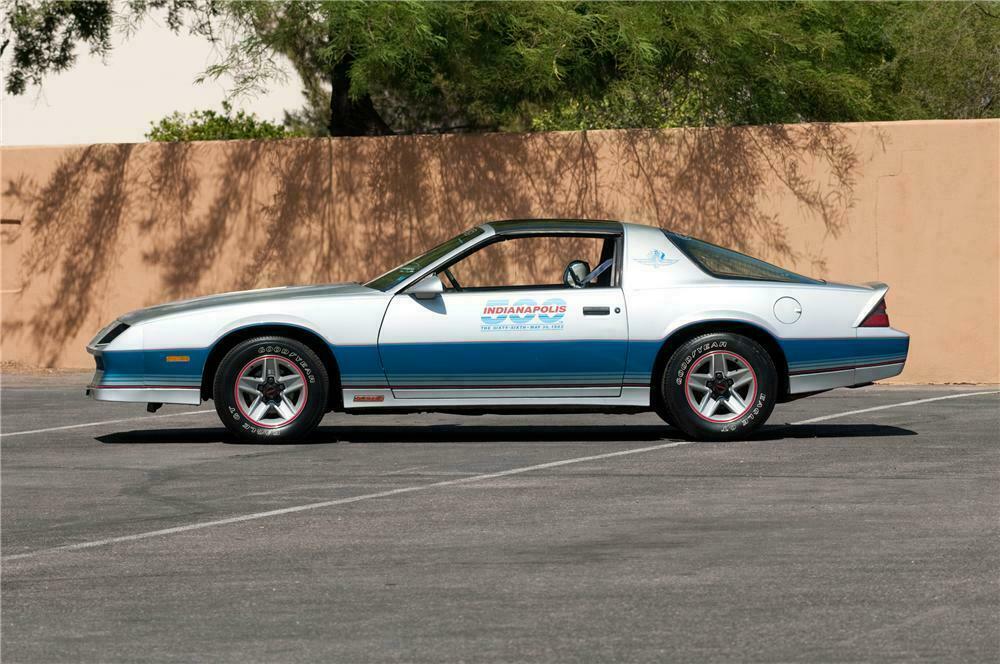
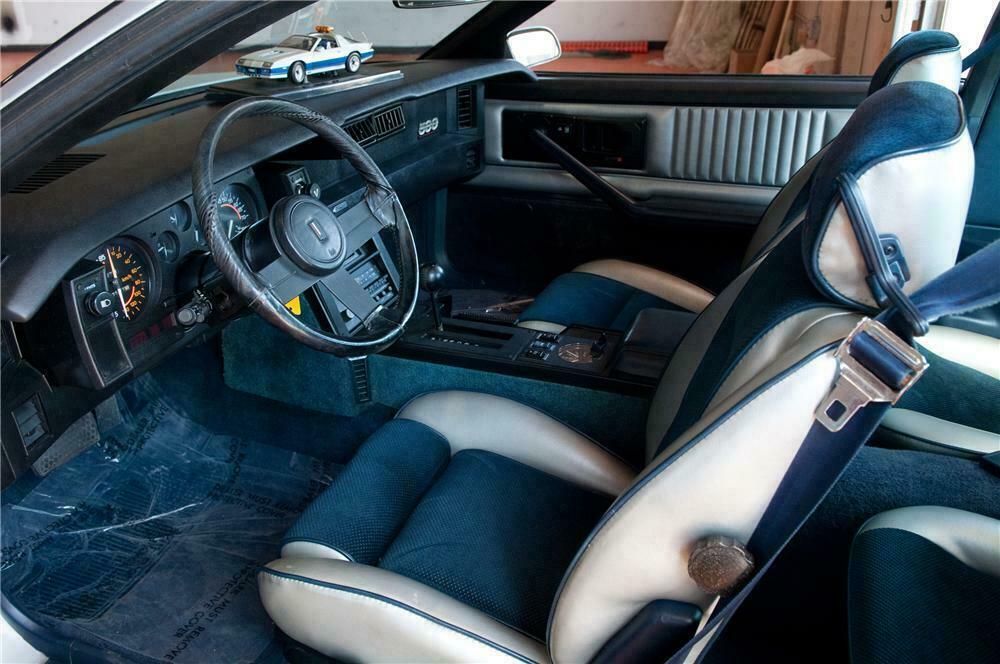

The third generation 1982 Chevrolet Z28 Camaro with a 305 cubic inch small-block LG4 V8 rated at 145 horsepower (LU5 165 hp TBI 305 cube upgrade available w/ AT only). It weighed about 3000 lbs and paced the 1982 Indianapolis 500. Photo of this festival parade car courtesy of Barrett-Jackson Auction Company
Stay tuned. We’ll cover the throttle body injected C4 transition next time. Please be patient.
Written by Jez Stephens
[1] The 90% reduction in NOx emissions was originally targeted for the 1976 model year. This target was so aggressive that it was cut to a 75% reduction to be met in 1982 vs. 1976. The 90% reduction in NOx would ultimately be met in the 1994 model year. Calculated with data from Air Quality Management in the US (2004), The National Academies of Sciences Engineering Medicine, page 138 http://nap.edu/10728 accessed 9/15/2019
[2] Zora Arkus-Duntov, The Legend Behind Corvette, Jerry Burton, Bentley 2002, page 358
[3] https://www.rollingstone.com/music/music-news/bruce-springsteens-greetings-from-asbury-park-n-j-10-things-you-didnt-know-204206/ accessed 8/19/2019 –and- https://www.manfredmann.co.uk/?album=the-roaring-silence accessed 2-1-2019
[4] Page 239 and 242 America’s Star Spangled Sports Car, Karl Ludvigsen –and- AnotherApex estimates ~ 100 lbs+ in safety equipment –and- Mike Mueller 2006, page 166 larger mufflers; page 170, 1974 exhaust resonators added; page 176 1975 2 to 1 to 2 exhaust for single catalytic converter
[5] https://www.caranddriver.com/reviews/a15143599/1974-ford-mustang-ii-mach-i-review/ accessed 8/19/2019
[6] Ironically the Chrysler F-body was Motor Trend’s 1976 Car of the Year https://www.hemmings.com/blog/article/reputation-abberation-sensation-1979-dodge-aspen-r-t/ accessed 9/6/2019
[7] http://content.time.com/time/arts/article/0,8599,1870975,00.html accessed 9/6/2019
[8] The ’64 Pontiac GTO Pontiac is broadly accepted as the first intentional muscle car Trans Am: 50 Years, Tom Glatch, Motorbooks, 2018, page 21
[9] “As its late February debut, the 1970 Corvette introduced new styling touches that prevailed through 1972 and a new pricing philosophy that marked a sharp break from the past. Both indicated a further shift of the Corvette away from the role of the pure sporting car (the ZL-1 notwithstanding) and toward its new orientation as a luxury Sports car.” Corvette, America’s Star-Spangled Sports Car, Karl Ludvigsen, Automobile Quarterly, 1977, page 230
[10] Corvette Sales Brochure 1970: “New for ’70 is a Customer Interior you can order with black or saddle leather seats, plush cut-pile carpeting and the rich look of wood on door panels and console.” Corvette Sales Brochure 1972: “Corvette exterior options Luggage carrier. Many overs like this convenience available from your dealer. Adds to your vacationing pleasure.”
[11] https://autoweek.com/article/car-news/jaguars-stunning-e-type-defined-car-american-generation accessed 8/11/2019
[12] https://autoweek.com/article/car-news/jaguars-stunning-e-type-defined-car-american-generation accessed 8/11/2019
[13] Convertibles were increasingly considered unsafe and endangered – Jaguar XK8, The Authorized Biography, Philip Porter, Bay View Books Limited, 1998, Pages 21,24, and 25
[14] Max Howard https://www.hagerty.com/articles-videos/articles/2009/06/02/1978-1995-porsche-928-german-gt 8/20/2019
[15] Alan Franklin https://petrolicious.com/articles/928-ways-to-kill-the-911 accessed 8/20/2019
[16] Ken Gross https://s3-prod.autoweek.com/s3fs-public/TBT%20Peter.pdf accessed 8/20/2019
[17] Z-Car, A Legend In Its Own Time, Ben Millspaugh, TAB Books, 1991 page 24
[18]Brock Yates https://www.caranddriver.com/reviews/a15143501/1978-chevrolet-corvette-road-test/ accessed 8/20/2019
[19] According to Dave McLellan a swooping glass hatchback C3 had been prototyped by Duntov around 1973 but was postponed due to expense. Dave McClellan, Corvette from the Inside, Bentley, 2002 page 75
[20] Trailer hitch first offered in 1977; fuel tank increased from 17 to 23.7 gallons per GM.
[21] Brock Yates https://www.caranddriver.com/reviews/a15143501/1978-chevrolet-corvette-road-test/ accessed 8/20/2019
[22] Full sentence is “Not only will it run faster now — the L-82 version with four-speed is certainly the fastest American production car, while the base L-48 automatic (0-60: 7.8 seconds, top speed: 123 mph) is no slouch — but general driveability and road manners are of a high order as well.” Brock Yates https://www.caranddriver.com/reviews/a15143501/1978-chevrolet-corvette-road-test/ accessed 8/20/2019
[23] https://www.caranddriver.com/reviews/a15115075/1979-chevrolet-corvette-road-test-review/ accessed 9/6/2019
[24] https://www.caranddriver.com/reviews/a15115075/1979-chevrolet-corvette-road-test-review/ accessed 9/6/2019
[25] Hannah Yasharoff notes that the 1978 cornerstone movie Animal House coined the ‘‘slobs vs. snobs’’ genre in her reflective 40th anniversary article: In the era of #MeToo, is it still OK to laugh at ‘Animal House’? https://www.usatoday.com/story/life/movies/2018/07/27/animal-house-turns-40-can-we-still-laugh/822642002/ accessed 8/20/2019
[26] In regards to the 1977 and 1978 interior update, Falconer notes the cheap parts bin special for the glove-box latch that popped open over every bump. “ . . . a typically terrible example of GM’s penny-pinching attitude. . . Ten years earlier the 1963-1967 Sting Ray had come with an excellent glove box door and lock.” Original Corvette; the Restorer’s Guide 1968-1982, by Tom Falconer, MBI publishing company, 2001, page 114
[27] Dave McLellan notes in his wonderful book that Borg-Warner had been running a production line exclusively for Corvette but the friction of low demand and poor treatment, led BW to cancel its supply contract with GM starting with the 1982 model-year, Corvette from the Inside, Dave McLellan, Bentley, 2002, page 78
[28] Lloyd Reuss – the father of present GM President Mark Reuss – enabled V8 retention for the F-body Camaro and Firebirds. This according to Dave McClellan in his book Corvette from the Inside, (Bentley, 2002 page 98). Mr. Llyod Reuss would later become CEO of GM under Chairman Robert Stempel.
[29] The Complete Book of Chevrolet Camaro, by David Newhardt, Motorbooks 2017





